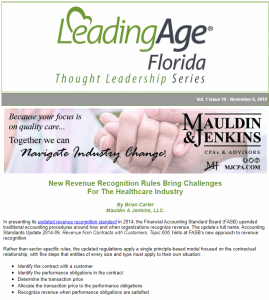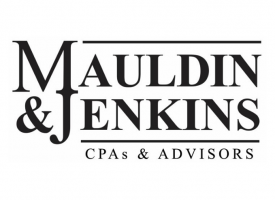In presenting its updated revenue recognition standard in 2014, the Financial Accounting Standard Board (FASB) upended traditional accounting procedures around how and when organizations recognize revenue. The update’s full name, Accounting Standards Update 2014-09, Revenue from Contracts with Customers, Topic 606, hints at FASB’s new approach to revenue recognition.
Rather than sector-specific rules, the updated regulations apply a single principle-based model focused on the contractual relationship, with five steps that entities of every size and type must apply to their own situation:
- Identify the contract with a customer
- Identify the performance obligations in the contract
- Determine the transaction price
- Allocate the transaction price to the performance obligations
- Recognize revenue when performance obligations are satisfied
Private companies must adopt the updated standard for annual reporting periods beginning after December 15, 2018; the effective date was one year earlier for public entities.
As an industry that had followed revenue recognition rules tailored to its typical transactions, the healthcare sector faces a rocky path to full implementation of the updated standard. Besides the basics of revamping data collection processes, accounting systems and reporting templates, healthcare organizations must address a number of complex issues in following the new model. Key considerations include:
- Price concessions. The new standard allows healthcare providers to count as part of the contract price only amounts the company expects to collect. Therefore, implicit price concessions (as with self-pay and uninsured patients) no longer constitute previously recognized revenue and cannot be considered bad debt.
- Third-party settlement adjustments. Under the new standard, estimations of third-party settlements must be addressed as a variable consideration and based on one of two factors:
- If a limited range of outcomes exist, then estimates can align with the most likely of these possibilities
- For more variable outcomes, the estimate should reflect the expected value of the settlement using a range of figures weighted for probability
- Life care contracts. Monthly service fees and nonrefundable advance or entry fees for continuing care retirement communities may be amortized in alignment with the actual level of service required at any point, which means more of the total revenue could be recognized later in the contract than under the previous standard.
- Transactions that span multiple reporting periods. When service delivery spans more than one reporting period, allocating the proper amounts to each period will require special care. Businesses must scrutinize such transactions closely to separate costs and revenues appropriately.
- Portfolios of contracts. The new standard allows providers to group contracts into portfolios based on shared characteristics, assuming the impact is insignificant. This provision lets healthcare companies handle batches of contracts delineated by contract type, payor type, specific payor or other reasonable groupings.
In addition to the five steps, ASU 2014-09 beefs up disclosures. While many are elective for non-public entities, others are mandatory. The four new elements that must be reported are:
- Information about disaggregation of revenue
- Contract balances
- Types of performance obligations
- Contract costs
For healthcare organizations, meeting the new revenue recognition standard holds difficulty. But given that noncompliance is out of the question, company leaders should accept this challenge and move forward with clarity and commitment. The experienced healthcare business advisors at Mauldin & Jenkins can guide you through the transition, assist with accounting and reporting changes, and help your company thrive while remaining in full compliance with the updated revenue recognition standard.
This content provided by Brian Carter with Mauldin & Jenkins, LLC for LeadingAge Florida.


